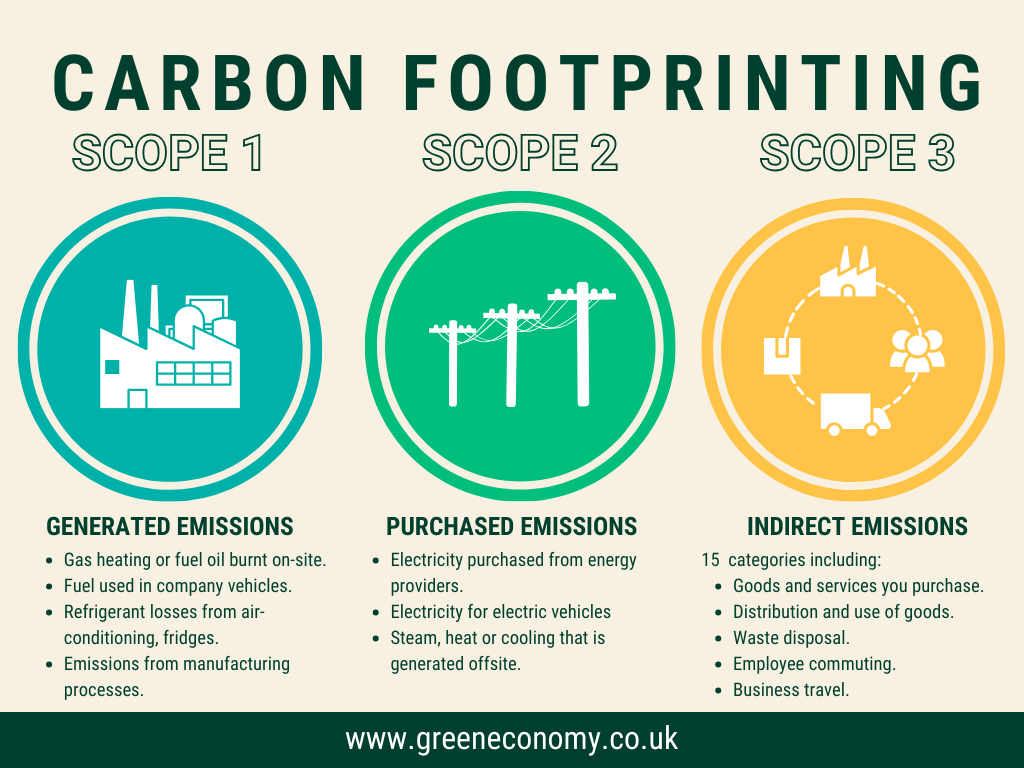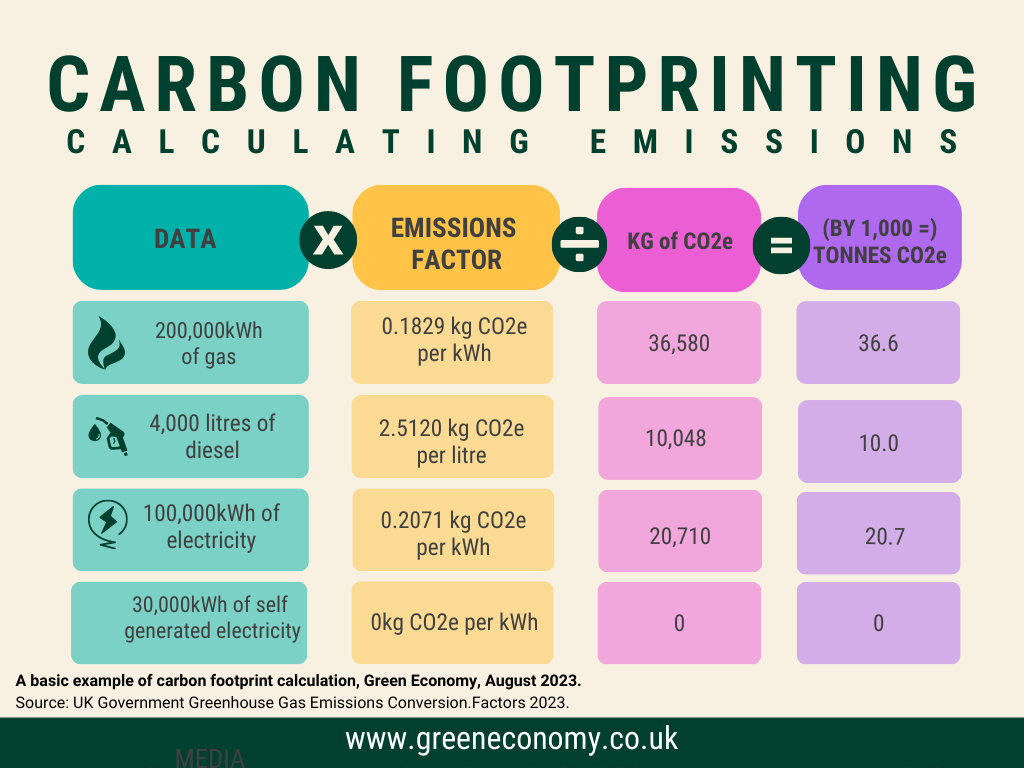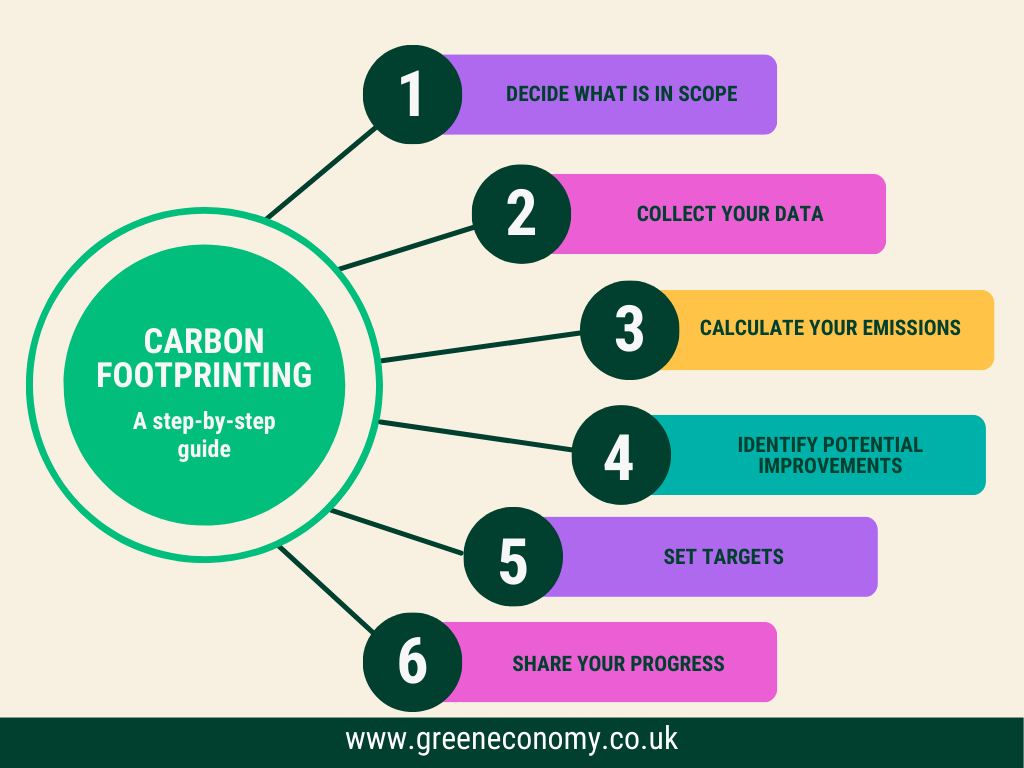
A business guide to carbon footprinting
Read time: 5 minutes
Before you can start your journey to net zero, it is important to understand where you are starting from. This guide explains all you need to know about carbon footprinting and how to measure this in your business.
Companies of all sizes from around the world are committing to net zero emissions – but you can’t set a target without measuring your carbon footprint first.
No matter what sector you operate in, the need to understand your carbon footprint is now a mainstay of business operations. Energy intensive and large firms across the UK are required to report on their carbon emissions, and increasing procurement processes, including those with the UK Government, require respondents to share their carbon reduction plans as part of the tendering process. As such, carbon footprinting – the process of measuring your businesses environmental impact – deserves time and attention in your business planning.
On a more practical level, measuring your carbon footprint provides many direct benefits including cost reduction, competitive advantage and company image, but you can’t manage what you don’t measure, and by collecting the data you’ll need for a carbon footprint you’ll be able to identify and prioritise where you can make the biggest improvements to the way you use energy, fuel and other resources.
Put simply, it’s a measure of your contribution of greenhouse gases to the atmosphere. There are generally two types – organisational carbon footprints and product carbon footprints. This blog focuses on the former.
Although it is commonly referred to as a carbon footprint, best practice includes all the greenhouse gas emissions you emit over a 12-month period and gives you a total figure expressed in tonnes of carbon dioxide equivalent (CO2e). There are six key greenhouse gases emitted by human activities that contribute to global warming, but to make things easier we measure everything in relation to CO2 because it’s the most common.
There are many possible sources of greenhouse gas emissions from a business. To make managing them easier, we split them into three ‘scopes’.


For most emissions sources, there is a specific ‘emissions conversion factor’ to calculate the total carbon from that activity. For example, to measure the carbon emitted by a van that runs on diesel, you take the litres of diesel consumed by the van and multiply it by the corresponding emission factor for diesel.
Data x Emissions Factor = Greenhouse gas emissions


The UK emissions factors are publicly available so you can do this yourself on a spreadsheet or you can use one of many tools available online that do it for you. Choose the emission factors for the year the majority of your data falls in. e.g., if your reporting year is April 2022 - March 2023 - use 2022 emission factors.
There are also formal routes to verify your carbon footprint to a recognised standard, such as ISO 14064 - Carbon Assessment Verification or the Carbon Trust Route to Net Zero Standard, to name just two. However, if you’re just starting out, with the right data to hand you can do it yourself and achieve a good internal benchmark for future improvement.
Contact Green Economy for support calculating your carbon footprint


Set targets
Use your first carbon footprint as a baseline to set targets. The Science Based Targets initiative, which helps companies to set targets based on what climate science tells us we need to achieve, currently recommends an absolute reduction of 2.5 - 4.2% year-on-year as a minimum – although many companies are moving far faster.
Share your progress
Communicating your progress to stakeholders – both internal and external – is a great opportunity to demonstrate your commitment to improving environmental performance and tackling climate change.
Green Economy is here to help businesses on their carbon reduction journey.
Our specialist advisors can audit your business to identify the most effective efficiency measures, provide advice and support on data collection, and guide you through your carbon footprint calculation.
Get to grips with your footprint using our online Carbon Tool. Calculate your carbon across Scope 1, 2, and 3 and gain acurate, high quality carbon data for your business.
The UK Government was the first major economy to set a formal target to hit net zero by 2050. But what exactly does that mean, and how are we going to achieve it?
What is meant by ‘Scope 3’ greenhouse gas emissions, why they are important and how can businesses begin to measure them as part of their carbon footprint?
what is meant by climate change targets that are ‘science-based’, why are they important and how can businesses follow a science-based pathway in their own carbon reduction plans?